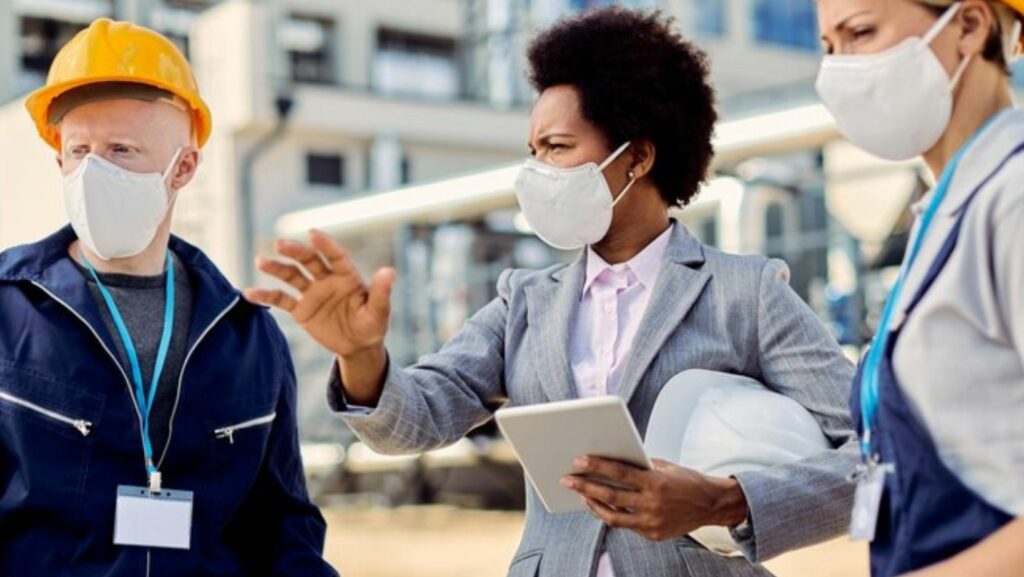In today’s rapidly evolving business environment, operational efficiency stands as a cornerstone of success. Organizations persistently explore avenues to streamline processes, enhance output, and maximize revenue. Yet, amidst these pursuits, improved safety measures for workplace efficiency often remain a sidelined concern. Contrary to common perception, safety protocols aren’t mere regulatory obligations; they play a pivotal role in optimizing operational effectiveness and output. As per research findings, workplace accidents and illnesses incur substantial economic costs globally, showcasing the profound influence of safety on business efficacy. Strengthened safety protocols not only safeguard employees but also foster a work environment conducive to heightened efficiency and productivity.
Improving Efficiency and Safety through Design
Enhancing workplace efficiency is particularly pertinent for engineers, and one effective approach involves investing in ergonomic solutions. Ergonomics, a discipline focused on tailoring workspaces and equipment to suit human physiology, mitigates the risk of musculoskeletal disorders while enhancing overall comfort and productivity. Engineer-centric ergonomic interventions, such as adjustable workstations, specialized chairs, and optimized lighting, have been proven to significantly enhance both well-being and performance. Research indicates that such ergonomic enhancements not only decrease the occurrence of work-related injuries but also amplify productivity. Through the integration of ergonomic solutions, engineering firms can cultivate a safer and more efficient work environment, laying the foundation for sustained business success.
Harnessing Technology for Safety and Efficiency
Technology plays a crucial role in enhancing workplace safety and efficiency. Advancements in safety technology, such as sensors, automation, and wearable devices, have revolutionized how businesses manage safety risks. For instance, sensor-equipped machinery can detect potential hazards in real time and automatically shut down to prevent accidents. Similarly, wearable devices, such as smart helmets and safety vests, provide employees with instant alerts and warnings, enabling them to take proactive measures to avoid potential dangers. By leveraging technology, companies can not only enhance safety but also optimize processes, minimize downtime, and improve overall efficiency.
Empowering Through Training and Education
Training and education also play a vital role in enhancing workplace efficiency through improved safety measures. Properly trained employees are better equipped to identify hazards, follow safety protocols, and respond effectively in emergency situations. Comprehensive safety training programs should cover a wide range of topics, including hazard recognition, emergency procedures, and equipment operation. Moreover, ongoing safety education ensures that the employees stay informed about the latest safety regulations and best practices.

By investing in employee training and education, businesses can create a safety-conscious culture where everyone is actively engaged in maintaining a safe and efficient work environment.
Addressing Mental Health for Overall Well-being
In addition to protecting employees from physical harm, mental health and well-being are also essential components of workplace safety. Stress, anxiety, and burnout not only impact employee health and morale but also hinder productivity and performance. Employers must prioritize mental health initiatives and create a supportive work environment where employees feel valued, respected, and heard. Flexible work arrangements, employee assistance programs, and regular check-ins with the managers can help alleviate stress and promote well-being. By addressing mental health concerns and promoting work-life balance, businesses can enhance overall efficiency and productivity.
The Role of Communication in Safety
Another critical aspect of workplace safety is effective communication. Clear and concise communication is essential for conveying safety policies, procedures, and emergency protocols to employees. Regular safety meetings, toolbox talks, and safety signage can help reinforce key messages and ensure that everyone is aware of their responsibilities regarding safety. Moreover, fostering open communication channels encourages employees to report hazards, near misses, and safety concerns promptly. By prioritizing communication, businesses can create a culture of safety where everyone feels empowered to contribute to a safer and more efficient work environment.
Implementing Continuous Improvement Strategies
Continuous improvement is crucial for maintaining workplace efficiency and safety in the long run. By fostering a culture of ongoing enhancement, organizations can systematically pinpoint areas for improvement and implement changes to optimize processes and safety measures. This approach entails regular assessment, gathering feedback, and adapting to changing circumstances.

Strategies for continuous improvement encourage employee participation in problem-solving and decision-making, fostering a sense of ownership and dedication to improvement. Through continual refinement and innovation, businesses can achieve higher levels of efficiency, safety, and overall performance, ensuring sustained success in today’s ever-changing business environment.
Final Thoughts
Enhancing workplace efficiency through improved safety measures is not only a moral imperative but also a strategic business decision. By investing in safety, companies can protect their most valuable asset—their employees—while also optimizing processes, minimizing downtime, and improving overall productivity. From implementing ergonomic solutions and leveraging technology to providing comprehensive training and fostering a supportive work environment, there are numerous ways businesses can enhance safety and efficiency. Ultimately, a safe workplace is a productive workplace, and by prioritizing safety, companies can achieve long-term success and sustainable growth.

